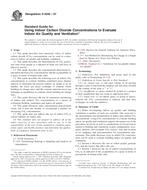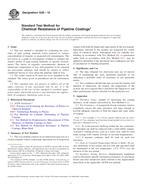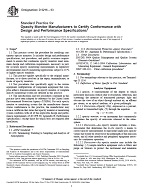1.1 This test method describes a procedure for sampling and analysis of volatile organic compounds (VOCs) in ambient, indoor, or workplace atmospheres. The test method is based on the collection of air samples in stainless steel canisters with specially treated (passivated) interior surfaces. For sample analysis, a portion of the sample is subsequently removed from the canister and the collected VOCs are selectively concentrated by adsorption or condensation onto a trap, subsequently released by thermal desorption, separated by gas chromatography, and measured by a mass spectrometric detector or other detector(s). This test method describes procedures for sampling into canisters to final pressures both above and below atmospheric pressure (respectively referred to as pressurized and subatmospheric pressure sampling).
1.2 This test method is applicable to specific VOCs that have been tested and determined to be stable when stored in canisters. Numerous compounds, many of which are chlorinated VOCs, have been successfully tested for storage stability in pressurized canisters (1-4). Although not as extensive, documentation is also available demonstrating stability of VOCs in subatmospheric pressure canisters. While initial studies were concentrated on non-polar VOCs, information on storage stability has been extended to many polar compounds as well (5-7).
1.3 The procedure for collecting the sample involves the use of inlet lines and air filters, flow rate regulators for obtaining time-integrated samples, and in the case of pressurized samples, an air pump. Canister samplers have been designed to automatically start and stop the sample collection process using electronically actuated valves and timers (8-10). A weatherproof shelter is required if the sampler is to be used outside.
1.4 The organic compounds that have been successfully measured at single-digit parts-per-billion by volume (ppbv) levels with this test method are listed in . This test method is applicable to VOC concentrations ranging from the detection limit to 300 ppbv. Above this concentration, samples require dilution with dry ultra-high-purity nitrogen or air.
1.5 This standard does not purport to address all of the safety concerns, if any, associated with its use. It is the responsibility of the user of this standard to establish appropriate safety and health practices and determine the applicability of regulatory limitations prior to use. Safety practices should be part of the user’s SOP manual.
Product Details
- Published:
- 12/10/2001
- Number of Pages:
- 21
- File Size:
- 1 file , 300 KB


